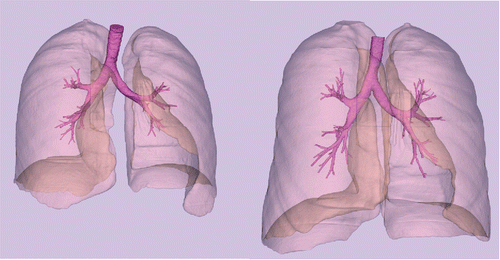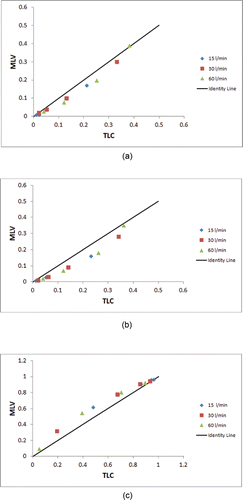Figures & data
Figure 1. Lung envelopes and airways segmented from HRCT images at MLV (left) and TLC (right) for subject H147.

Table 1. Subject data and air volume from imaging. NA is not applicable. UA is unavailable.
Table 2. Characteristics of the computational fluid dynamics geometry models.
Figure 2. Airway geometry models based on imaging at MLV (left) and TLC (right) for subject H147. Note that the images are at slightly different orientation based on the position of the subject when imaged. Particle deposition results are for 5 µm particles with 30 L/min inhalation flow rate.

Figure 3. Comparison of MLV vs. TLC data points given in to the identity line for (a) right lung deposition fraction, (b) left lung deposition fraction, and (c) penetration fraction.

Figure 4. Comparison of MLV vs. the “cut” TLC data points given in to the identity line for (a) right lung deposition fraction, (b) left lung deposition fraction, and (c) penetration fraction.

Table 3. Computational fluid dynamics results of average large-scale deposition fractions for each test case.
Table 4. Computational fluid dynamics results of average local deposition fractions in the right upper lobe for each test case.
Table 5. Computational fluid dynamics results of average large-scale deposition fractions for each test case where the deposition fractions for the TLC models are “cut” to match the MLV depth.
Table 6. Computational fluid dynamics results of deposition for subject H147.
